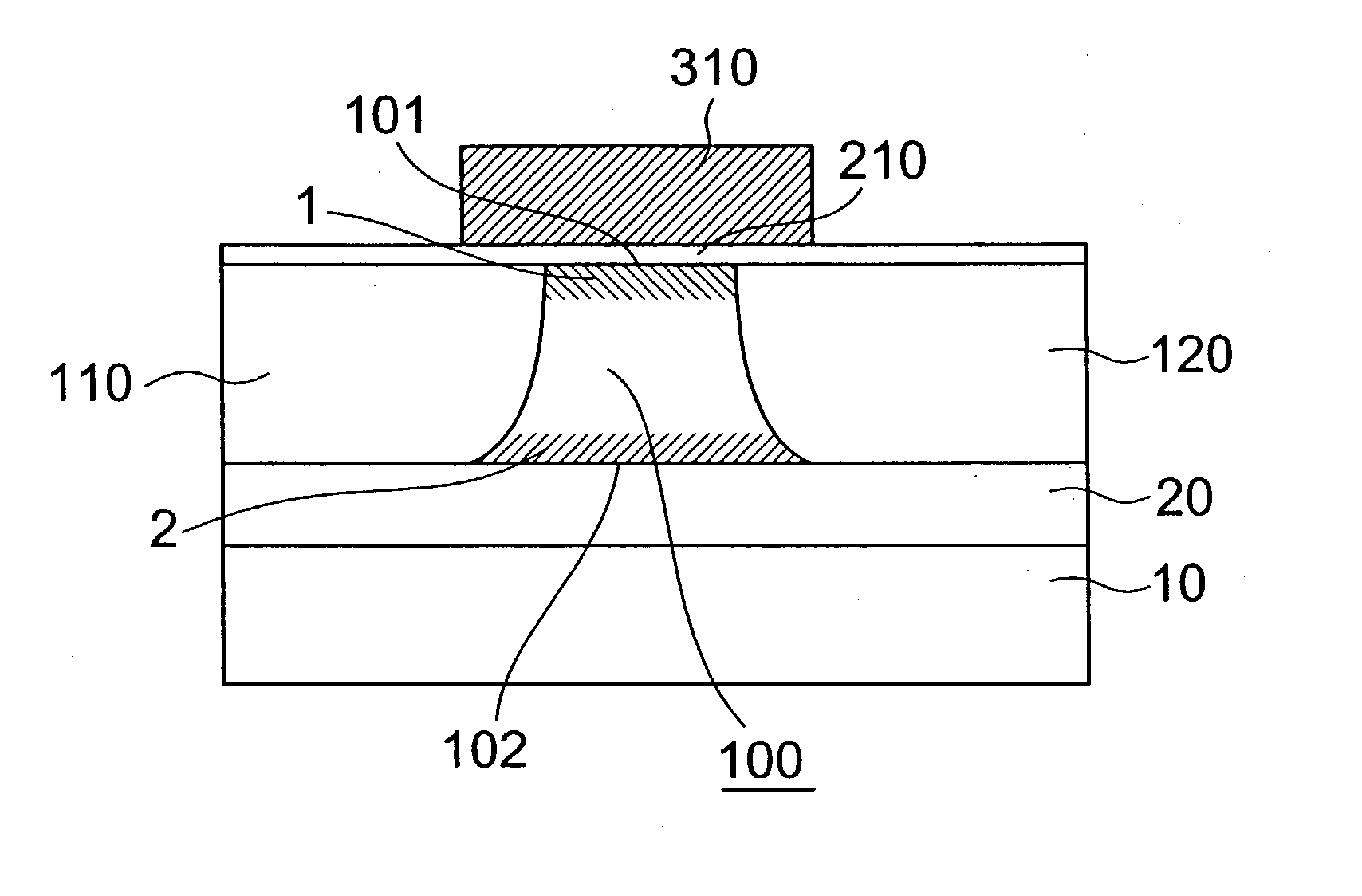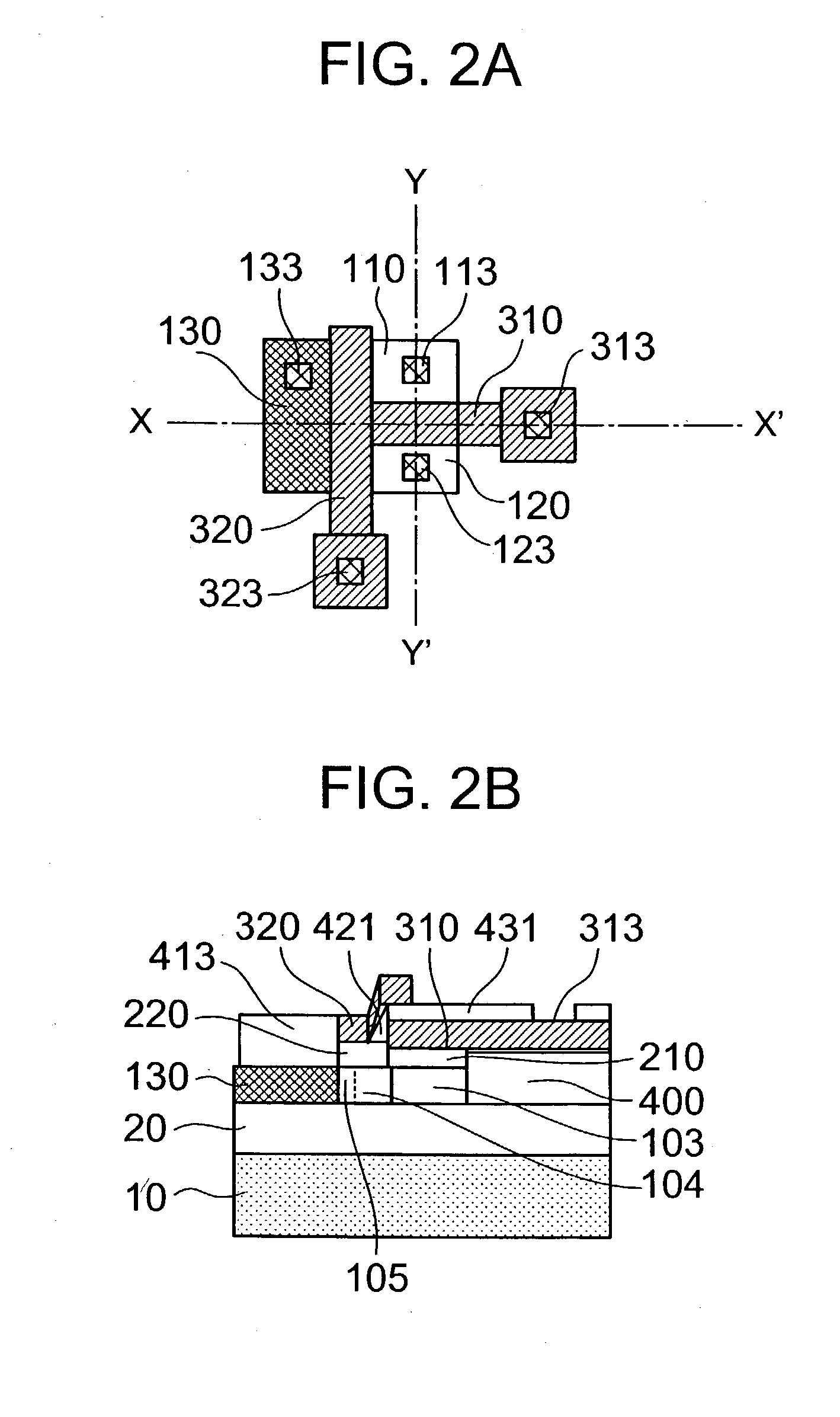Thin film memory, array, and operation method and manufacture method therefor
a film memory and array technology, applied in the field of thin film memory, can solve problems such as difficulty in assembling a large array
- Summary
- Abstract
- Description
- Claims
- Application Information
AI Technical Summary
Benefits of technology
Problems solved by technology
Method used
Image
Examples
embodiment 1
[0101] In Embodiment 1, cells of the present invention in FIGS. 5A and 5B are connected as shown in an equivalent circuit diagram of FIG. 7 to obtain a memory array. The memory array is operated by combination of voltages shown in Table 1 below. This array is suitable as a memory for a specific use because data can be written in cells of a word while data is read from cells of another word. The array is also suited for high speed refreshing operation. Table 1 shows the voltage relation among the word line, the writing bit line, the reading bit line, and the common line when the array is operated by a unipolar power supply of 1.2 V. Operation on a unipolar power supply is made possible by biasing the common line at a positive electric potential, usually, 0.5 V.
1TABLE 1 Operation Voltage Example of a Memory Array according to Embodiment 1 of the Present Invention Non-selected cell voltage (V) Selected cell voltage (V) Writing Erasing Reading Writing Erasing Reading Keeping CW CB CW CB...
embodiment 2
3TABLE 3 Operation Voltage Example of a Memory Array of the Present Invention Selected cell voltage (V) Non-selected cell voltage (V) Writing Writing (CW) Writing (CB) Reading "1" "0" Reading Keeping "1" "0" "1" "0" CW CB Keeping Word line 0 0 1.0 (first) 0.3 0 0 0.3 0.3 1.0 0.3 0.3 Bit line 0.6 0 0.5 0.3 0.3 0.3 0.6 0 0.3 0.5 0.3 Common line 0.3 0.3 0.3 0.3 0.3 0.3 0.3 0.3 0.3 0.3 0.3 CW (common word): cells sharing a word line CB (common bit): cells sharing a bit line
[0112] The word line voltage upon reading is supplied before the bit line voltage.
[0113] An acceptable change in voltage of one line is within .+-.0.1 V when the voltage of another line has the standard value. If the voltage of every line is changed in the same direction, the acceptable electric potential change is larger.
[0114] It is sufficient if the difference between the electric potential of each line and the electric potential of the common line satisfies the relation shown in Table 3. Accordingly, it may also ...
PUM
 Login to View More
Login to View More Abstract
Description
Claims
Application Information
 Login to View More
Login to View More - R&D
- Intellectual Property
- Life Sciences
- Materials
- Tech Scout
- Unparalleled Data Quality
- Higher Quality Content
- 60% Fewer Hallucinations
Browse by: Latest US Patents, China's latest patents, Technical Efficacy Thesaurus, Application Domain, Technology Topic, Popular Technical Reports.
© 2025 PatSnap. All rights reserved.Legal|Privacy policy|Modern Slavery Act Transparency Statement|Sitemap|About US| Contact US: help@patsnap.com



